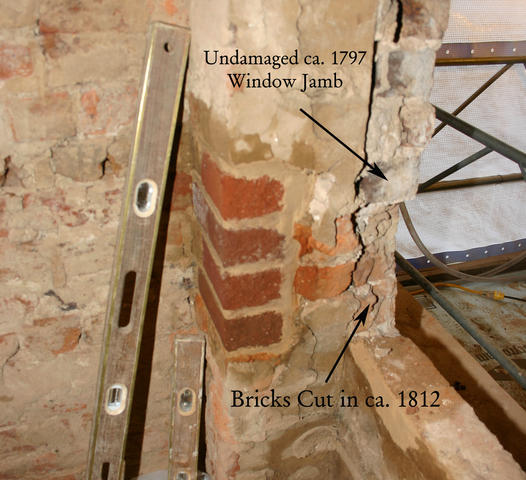
While the original height of the windows was clearly shown by the existing relieving arches and lintels, the bottom of the openings was more difficult to locate due to the extensive changes made to the windows in ca. 1812 and ca. 1901. After reinspecting all of the ca. 1797 windows it was discovered that the western jamb of the eastern window in the ca. 1797 Dining Room had not been altered when the new windows were installed in ca. 1812. By looking at the surviving ca. 1797 jamb it was possible to see exactly where the rough opening for the window had been located. The transition between the ca. 1797 window opening and ca. 1812 window opening was identified by the change in the texture of the bricks. The bottom of the ca. 1797 window was located where the smooth, undamaged bricks of the ca. 1797 window jamb changed to rough, broken bricks. The broken bricks were created when the the masons lowered the jambs to fit the taller ca. 1812 windows.

©The Montpelier Foundation
|
|
Evidence for the bottom of the ca. 1797 rough opening found on the ca. 1797 Dining Room's north window. |








